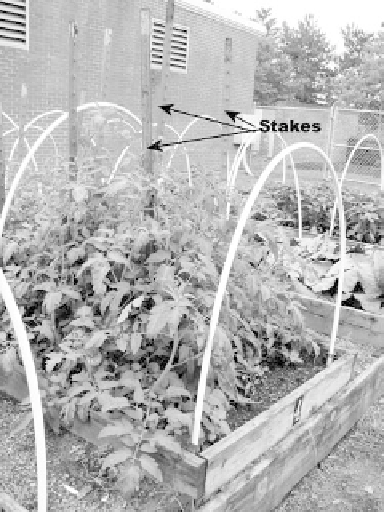Agriculture Reference
In-Depth Information
4.12.3 Cultivation
All these crops are grown in rows with standard cultivation methods. Soil is worked to
produce a fine seedbed and seeds planted in rows or in raised beds. In this group it is
common for seeds to be started in the greenhouse, screen house, or in seedbeds
before transplanting the seedlings to the field or garden. This is true for all these
plants but is particularly common for both tomatoes and peppers. The most common,
having been practiced longer than for other crops, is tomatoes, which are almost
never grown from seeds in the field or garden.
These vegetables respond to organic matter and fertilizer applications to soil.
Tomatoes are particularly sensitive to fertilization in that they will produce spectacular
plants when fertilized with nitrogen and in some cases of excess nitrogen fertilization
will produce large plants but no tomatoes. Tomatoes are also sensitive to calcium levels
in soil, and thus the pH of soil and its calcium levels are important to control.
Most of these plants grow on stems or stalks that carry the heads or have the eaten
portion on stems. The plants are strong enough to support the vegetable and grow
upright. The exception is tomato, which is not strong enough to grow upright, and
thus it is commonly grown attached to some support, such as tying to stakes
(Fig. 4.30) or on a trellis, so as to obtain vertical growth. This provides for easier har-
vesting and keeps the tomato off the ground and less likely to become damaged. If no
support is provided, tomato plants eventually bend over and grow along the ground.
Figure
4.30.
Tomatoes held up by stakes.









